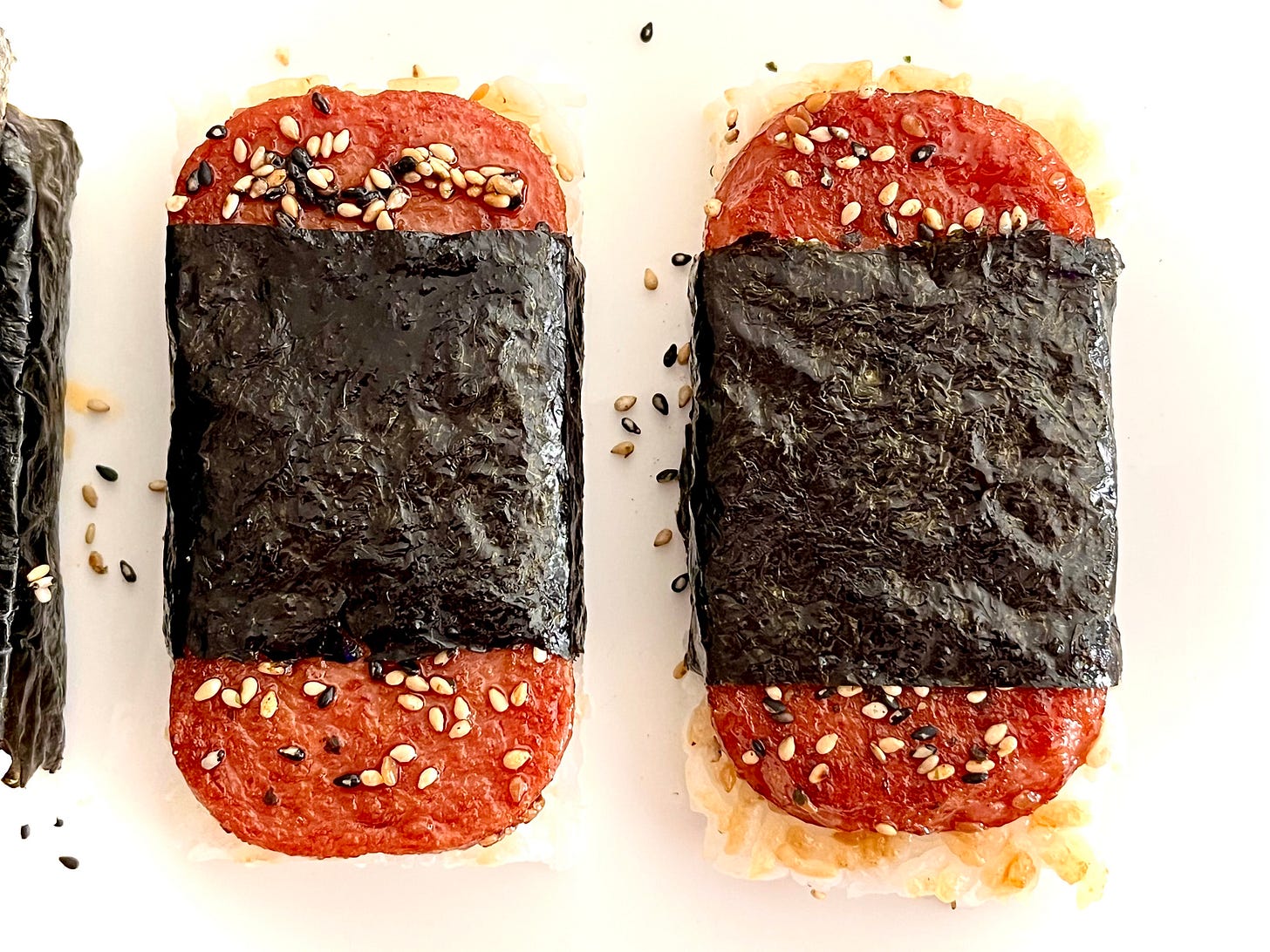Hola friends, how is everyone doing? Today I have for you a recipe from my senior director of R & D, Chef Charisse Grey. Do you remember Charisse? She’s the one who sent paella to space, and is now working with Ascent Technology to help astronauts eat better (and more delicious!) food in space. Charisse is from Hawaii, so I thought it would be fun for her to share a recipe featuring an ingredient that’s popular in Hawaii…no, it’s not pineapple, people, it’s Spam!
You might be asking, “hey, José, why on earth would I want to cook with Spam?” And I’m here to tell you that Spam has a fascinating history…and you know I love a good history lesson. Spam is made from pork shoulder and ham, and was created by Hormel back in the late 1930s because pork shoulder didn’t sell well on its own. There are a couple of theories about how it got the name Spam—when it was introduced to the market, it was sold as “spiced ham” and eventually was shortened to Spam…or it could also stand for Shoulder of Pork and Ham…?
Spam became popular during World War II because it wouldn’t spoil, so it was a product that could easily be delivered to the front lines to feed soldiers. Because food rations affected countries around the world, Spam made its way from the U.S. across the pond to the U.K. and Europe, and then to the Pacific where it became popular in South Korea and South Pacific islands like the Philippines…and of course, Hawaii.

Which brings us to the origins of Spam musubi! Because Hawaii on so many levels was a war zone during World War II, it experienced strict food rationing, and Spam became a lifeline during a time of extreme scarcity. Musubi, a form of onigiri, or rice-and-seaweed balls, have long been popular for lunchboxes in Japan and Hawaii with pickled vegetables, fish, or meat—so adding Spam to musubi was an obvious next innovation!
Charisse’s version of Spam Musubi calls for soyaki sauce, which is a combination of soy and teriyaki sauce—you can find it at many grocery stores, including Trader Joe’s and Whole Foods, or online—and furikake. If you’re not familiar with furikake, think of it like a Japanese “everything bagel” seasoning: it has all the good stuff…sesame seeds, salt and sugar, dried seaweed flakes and dried fish flakes that add an amazing umami flavor to whatever you’re cooking. You should definitely get some for your spice cabinet…you can use it on so many things! But really, you can customize this to your preferences—Charisse likes a lot of heat, so she will add a little spoon of chili crisp before wrapping up the Musubi. You can also make Musubi out of other ingredients, like tamago (egg omelet), teriyaki chicken, fried fish, and karaage (delicious fried chicken, of course!).
It’s important to point out that this recipe also calls for a rectangular mold (2 x 4 x 2 inches)–don’t skip out on it because your results will be so much better if you use it! Charisse recommends this inexpensive one on Amazon.
Okay people, tell me your thoughts on Spam, if you’ve ever had Musubi, or if you’ve tried to make it at home. I can’t wait to hear what you think about it!
Spam Musubi
Makes 10 rolls


